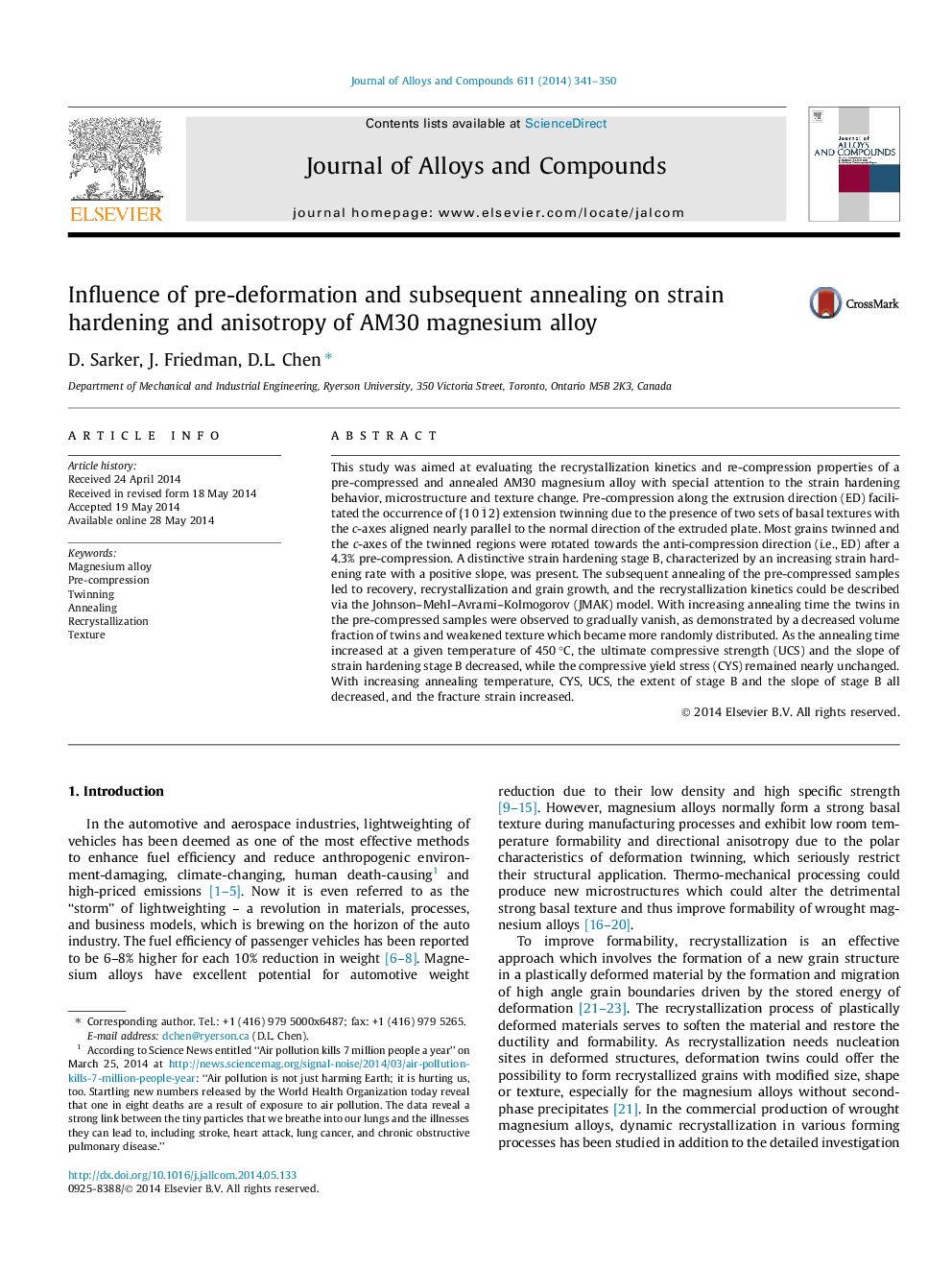| کد مقاله | کد نشریه | سال انتشار | مقاله انگلیسی | نسخه تمام متن |
|---|---|---|---|---|
| 1610485 | 1516282 | 2014 | 10 صفحه PDF | دانلود رایگان |

• Pre-compression along the extrusion direction facilitates extension twinning.
• A distinctive stage B is characterized by an increasing strain hardening rate.
• The recrystallization kinetics can be described via the JMAK model.
• With increasing annealing time, the existing twins gradually disappear.
• With increasing annealing temperature, the extent and slope of stage B decrease.
This study was aimed at evaluating the recrystallization kinetics and re-compression properties of a pre-compressed and annealed AM30 magnesium alloy with special attention to the strain hardening behavior, microstructure and texture change. Pre-compression along the extrusion direction (ED) facilitated the occurrence of {1 0 1¯ 2} extension twinning due to the presence of two sets of basal textures with the c-axes aligned nearly parallel to the normal direction of the extruded plate. Most grains twinned and the c-axes of the twinned regions were rotated towards the anti-compression direction (i.e., ED) after a 4.3% pre-compression. A distinctive strain hardening stage B, characterized by an increasing strain hardening rate with a positive slope, was present. The subsequent annealing of the pre-compressed samples led to recovery, recrystallization and grain growth, and the recrystallization kinetics could be described via the Johnson–Mehl–Avrami–Kolmogorov (JMAK) model. With increasing annealing time the twins in the pre-compressed samples were observed to gradually vanish, as demonstrated by a decreased volume fraction of twins and weakened texture which became more randomly distributed. As the annealing time increased at a given temperature of 450 °C, the ultimate compressive strength (UCS) and the slope of strain hardening stage B decreased, while the compressive yield stress (CYS) remained nearly unchanged. With increasing annealing temperature, CYS, UCS, the extent of stage B and the slope of stage B all decreased, and the fracture strain increased.
Journal: Journal of Alloys and Compounds - Volume 611, 25 October 2014, Pages 341–350